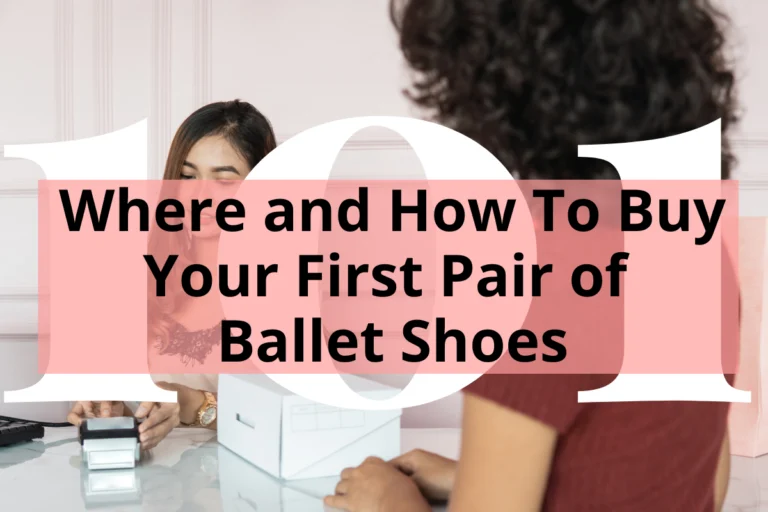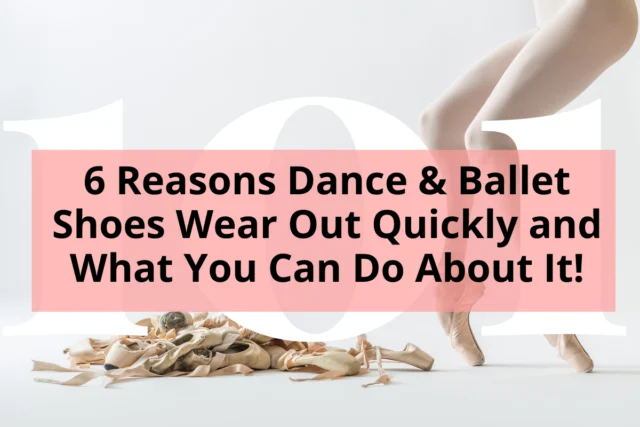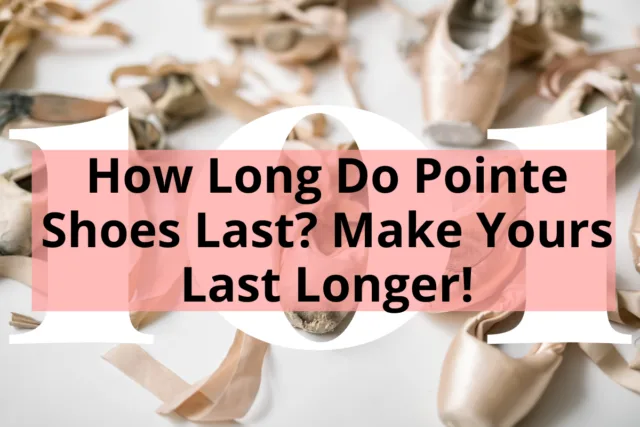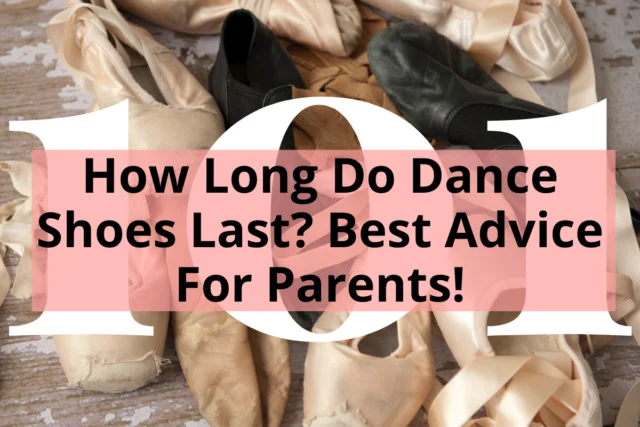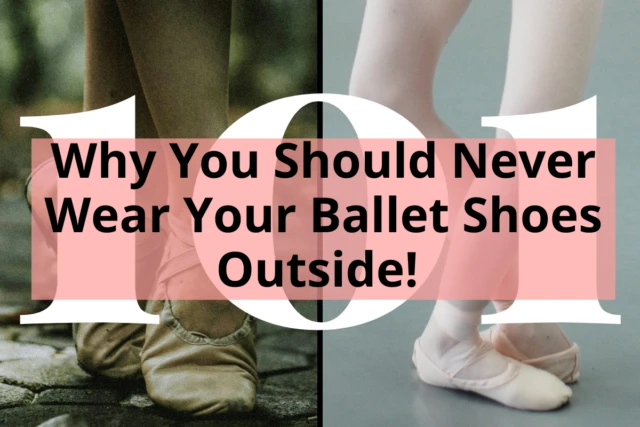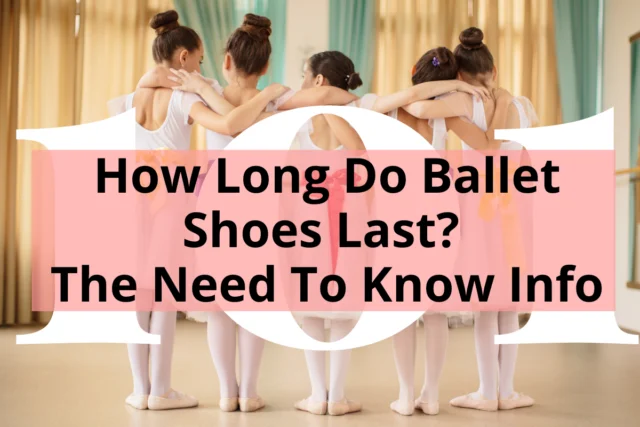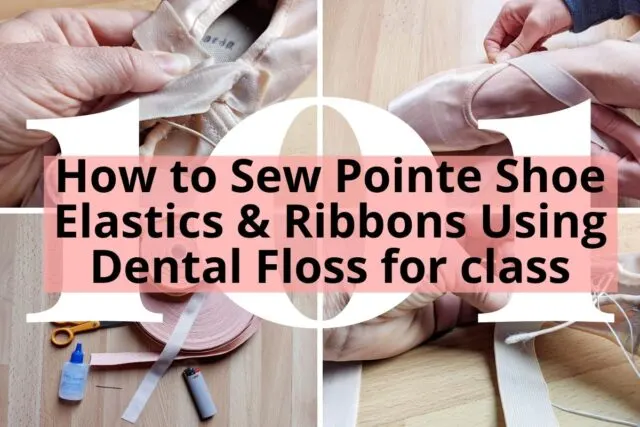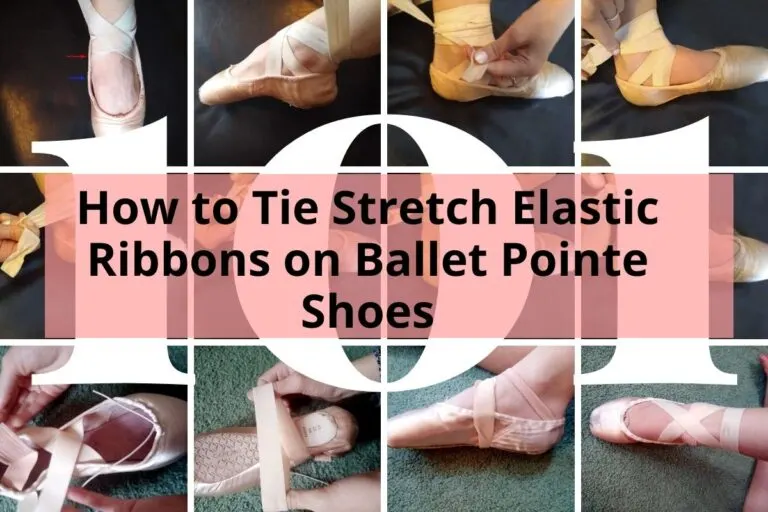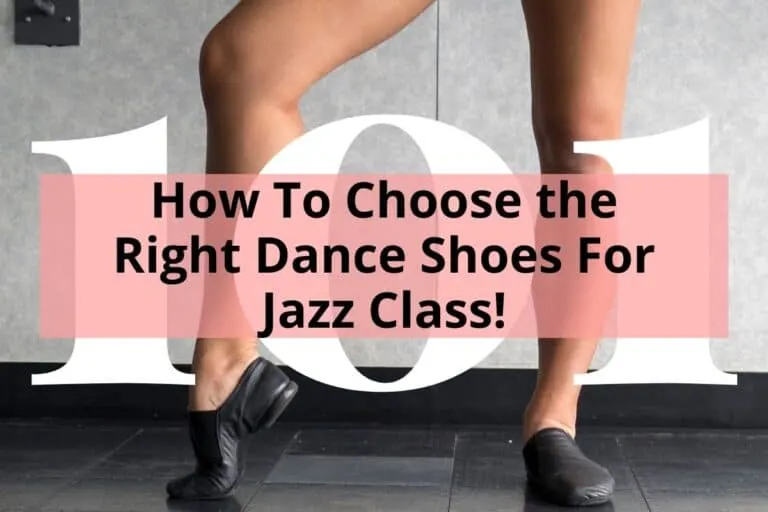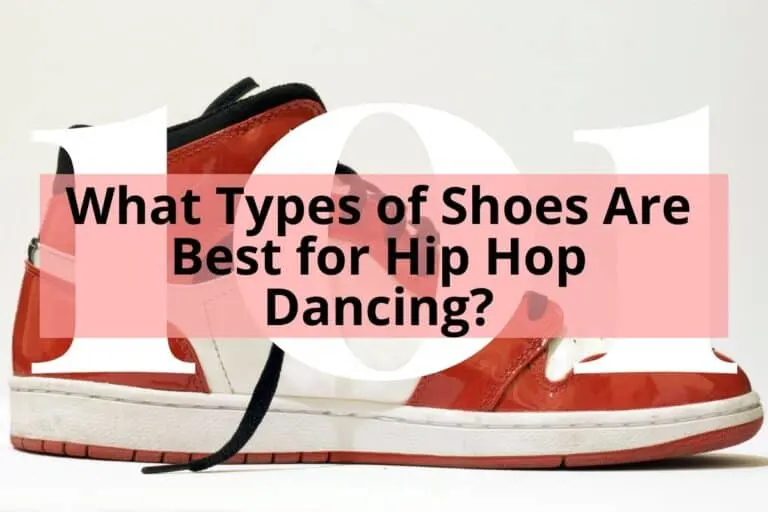Have you been talking about your ballet shoes but are not sure of what all the parts are called?
I mean there are plenty of pictures and images out there for pointe shoes telling you where the box and shank are, but flat ballet shoes don’t have those parts – so what are they all called?

Not to worry check out this quick post with photograph of my dancers feet and ballet shoes where I have labeled all the parts of a ballet shoe for you and given a description of what they are!
What are the Parts of a Ballet Shoe? – Labelled Diagram
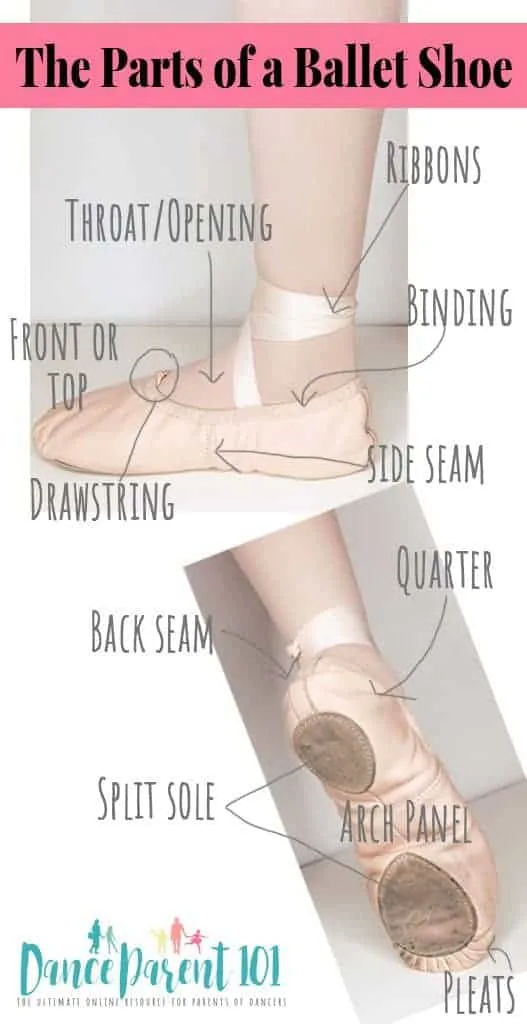
What are the Parts of a Ballet Shoe? – Glossary and Descriptions
Arch Panel: The panel of leather or canvas that covers the arch between the ball and heel in split sole shoes.
Back Seam: A ballet shoe will generally have a back seam which is reinforced with another piece of rectangular material over it for strength.
Binding: Where the drawstring goes through around the throat of the shoe.
Drawstring: This comes out of a small hole at the top of the throat of the ballet shoe and helps to tighten ballet shoes on the foot.
Elastics: 14-15mm wide elastics in the same color as a dancer’s tights or skin tone are a simple and easy way of ensuring ballet shoes stay on when dancing. Some dancers like having two elastics that crisscross or just one that is securely sewn into each side of the shoe above the instep to keep the shoe on when dancing.
Insole: This is the material used for the instep of the shoe.
Pleats: These are the folds of the leather under the toes of the ballet shoe.
Quarters: If you spit a shoe into four parts straight down the middle and across, the back two parts are your quarters.
Ribbons: Traditionally ribbons are used to secure ballet shoes to the feet and are often worn for exams and performances. They are attached to the shoe between the crisscross elastics or in the same place as the single elastic. You can wear ribbons with elastics or without. The ribbons are then wrapped around the ankle and tied to keep the shoe in
Sides and Top: Simply the sides and top of the ballet shoe.
Sole: The bottom of the shoe is usually made from a thin leather such as suede which provides just the right amount of grip to the shoe. When you are just starting out, dancers will generally wear a full sole for support and resistance, but as your child advances, they will be fine to wear a split sole (take a look at the photo of my girl’s ballet shoes and my old pointe shoes further on for the difference).
Throat or Opening: This is the part where you insert your foot; it is the opening to the shoe.
Why are Ballet Shoes Pink?
Ballet shoes are pink because traditionally ballerinas wore pink tights with matching shoes to help create the illusion of gracefulness, elegance and as if they were floating across the floor.
The color Pink helped to portray this illusion because it blended with the overall skin color and tones of the European people who developed ballet.
In recent years, ballet shoes and tights have become available in more colors to accommodate the many different cultures and people who do ballet.
However, pink ballet shoes and tights being the traditional uniform are still required regardless of skin color in many circumstances in the ballet world.
Boys on the other hand do not wear pink ballet shoes. Instead, traditionally they wore black or white ballet shoes, with more skin tone colors being available as well now days.


